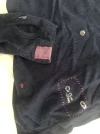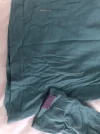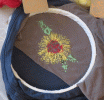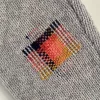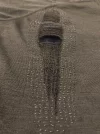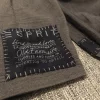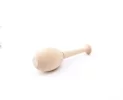If I may offer some opinions ...
Wool can be an outstandingly-good choice for garments to be worn in the outdoors because it retains its insulating characteristic even when wet.
Soft, very fine grades of wool such as e.g. Merino are more comfortable against the skin, but less abrasion resistant than coarser grades.
Coarser wools have larger diameter fibres that are stronger, stiffer, springier, and more abrasion resistant. However, they are itchier, and therefore their use should be restricted to outerwear, carpets, etc., where their toughness, abrasion resistance, and springiness are advantageous and they will not be in direct contact with the skin.
Felting & shrinkage:
Wool fibres are covered in tiny ratchet-like scales, as are human hairs. When moisture, warmth, and repeated frictional movements are present, and unless the wool fibres' scales have somehow been smoothed or deactivated by a shrink-proofing process, the fibres gradually ratchet past one another and become tangled. This permanently increases the density of the fabric and reduces its dimensions; i.e. it creates a shrunken felt.
Moisture, warmth, and repeated frictional movements are all present during machine washing, tumble drying, and to a lesser degree during hand washing. This is why special care must be taken when washing and drying wool garments that have not been shrink-proofed.
Moisture, warmth, and repeated frictional movements also tend to be present between some backpacks and one's own back when walking: the moisture comes from perspiration or rain, the warmth from exertion, and the repeated frictional movements arise as the backpack shifts back and forth across one's back, slightly but incessantly, with every step taken.
In my opinion, that incessant moist warm pulsing friction between some backpacks and one's own back should be considered to be a "severe use" situation for wool garments. In my experience this is especially true of some internal frame packs, which have no provision to hold the pack at a distance from one's back. (I have ruined several shirts using internal frame backpacks and eventually switched to an external frame pack for that and other reasons.)
I suspect that the wearing of any backpack for long distances is a special case that is not typically considered by most designers of fine wool garments. Garment designers: please correct me if I am in error.
I love wool, especially Merino wool. However, due to the risk of abrasion damage, I did not use any wool garments on any of my pilgrimages.
If someone can point me to wool garments that are both comfortable against the skin and reliably able to withstand severe-abrasion usage, please do so as I would like to evaluate same.
-
Straying off the topic of comfort VS abrasion resistance ...
Washing wool garments: Machine washing in water usually features a combination of moisture, warmth, and repeated friction, thus setting the stage for wool felting and shrinkage. Unless the garment maker's label clearly and unambiguously states that the wool garment may be machine washed in water, in my opinion it should never be. Gentle hand-washing in warm water is better. DO NOT use sodium-hypochlorite-based bleach because it will ruin the wool. Note that even if the wool has been shrink-proofed, the agitators in top-loading washing machines still tug and rub at the fabric, especially if the machine is overloaded. Conversely, even in cold water, which reduces the risk of felting and shrinkage, "excessive" agitation in an overloaded machine can stretch portions of the fabric or create abrasion marks, damaging the wool garments.
Drying wool garments: Tumble drying of water-wet garments also usually features a combination of moisture, warmth, and repeated friction, once again setting the stage for wool felting and shrinkage. There are additional risks of fibre breakage & attrition caused by simple abrasion, and yellowing of the wool fibres due to heat. Unless the garment maker's label clearly and unambiguously states that the water-wet wool garment may be tumble dried, in my opinion it should never be. Personally I completely avoid tumble drying wool items whenever possible. If and only if the maker states that tumble drying is permissible, and only when there is not sufficient time to dry the garment by laying it flat on a ventilated horizontal surface in dry circulating ambient air, I with reluctance tumble dry but only at the lowest temperature and for the briefest time possible.
Moths: ... eat wool silently, covertly, and more quickly than one might imagine, and to add insult to real injury, they poop into the garments. Wool fibres, unless competently treated at the textile factory with a recognized, proven, permanent anti-moth treatment, are inherently at risk of destruction (lots and lots of holes) by moths. A well-known moth-proofing chemical that I have used many times in industry is non-toxic, safe, and permanently renders the treated wool indigestible to moths. They are not poisoned, but get no nutrition from the wool, and either starve to death or move elsewhere. Purchasers of wool garments should always search the label on the garment or package for evidence that an anti-moth treatment has been accomplished.
You might consider filing the package label evidencing the shrink-proofing and anti-moth treatments with your receipt in case you need to file a warranty claim.
For what it is worth, I am a Certified Textile Engineering Technologist with years of experience in the fine-Merino-wool yarn spinning & dyeing industry, plus needle trade experience.












